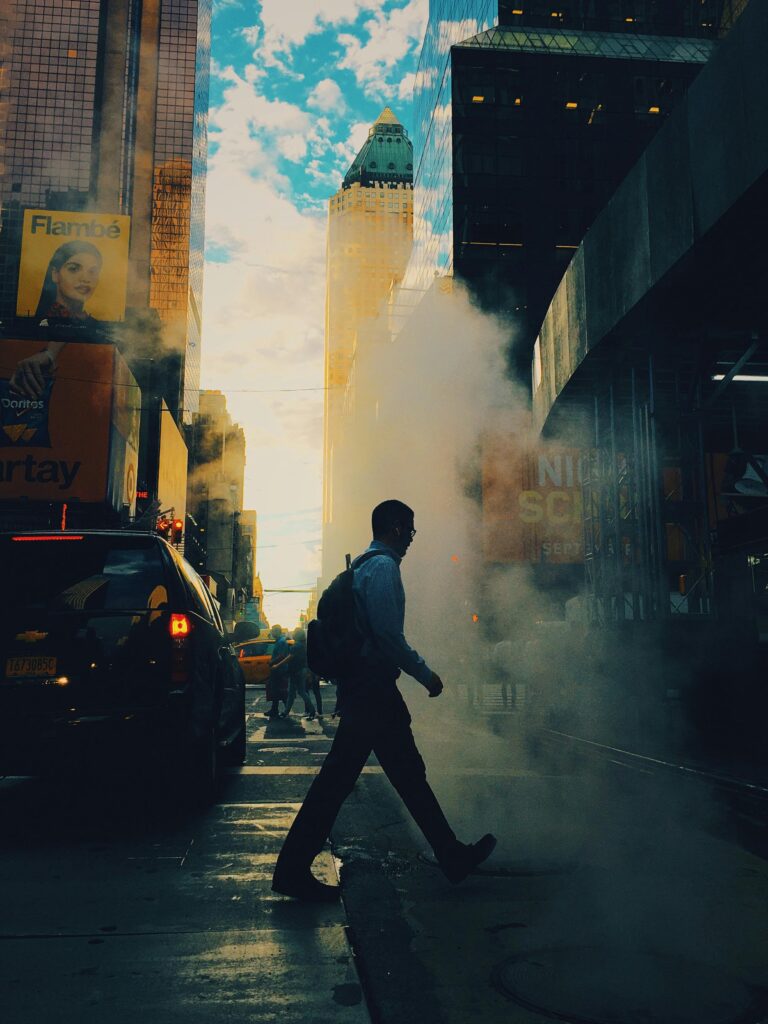Trending Topics / News
Smog: Causes, Effects, and Solutions for a Cleaner Future
Introduction
Smog has become one of the most dangerous environmental and health challenges faced by modern cities around the world. Whether it’s Lahore, Delhi, Beijing, or Los Angeles, millions of people wake up every day under a blanket of thick grey air that harms their health, reduces visibility, and impacts everyday life. Smog is more than just dirty air it’s a toxic mixture of pollutants that affects our lungs, heart, crops, climate, and overall quality of life. With rapid urbanization, industrial growth, and increasing vehicle usage, smog has turned into a global crisis.
This blog explains what smog is, how it forms, its types, causes, effects on human health and the environment, and most importantly what we can do to control it.
What is Smog?
The word smog is a combination of two words: smoke and fog. It was first used in the early 20th century to describe the foggy air in industrial cities filled with coal smoke. Today, smog refers to polluted air that reduces visibility and contains harmful chemicals like nitrogen oxides (NOx), sulfur dioxide (SO₂), carbon monoxide (CO), ozone (O₃), and particulate matter (PM2.5 and PM10).
Types of Smog
1. Classical or London Smog
- Also called sulfurous smog.
- Mainly caused by burning coal and fossil fuels.
- Contains sulfur dioxide and smoke particles.
- Common in cold, humid climates.
2. Photochemical or Los Angeles Smog
- Occurs in warm, sunny cities with heavy traffic.
- Caused by chemical reactions between sunlight and pollutants like nitrogen oxides and hydrocarbons.
- Produces ozone and other toxic chemicals.
- Appears as brown or yellowish haze.
How is Smog Formed?
Smog forms due to a combination of human activities and atmospheric conditions:

- Emission of pollutants from vehicles, factories, burning waste, and power plants.
- Sunlight reacts with chemical gases like NOx and VOCs (Volatile Organic Compounds).
- Temperature inversion traps pollutants close to the ground, preventing them from rising into the atmosphere.
- Low wind speed and high humidity make smog stay longer in the air.
Major Causes of Smog
1. Vehicle Emissions
- Cars, trucks, buses, and motorcycles release carbon monoxide, nitrogen oxides, and hydrocarbons.
- In big cities, vehicles contribute up to 70% of air pollution.
2. Industrial Pollution
- Factories, brick kilns, and power plants release harmful gases and smoke.
- Burning coal and fossil fuels increases sulfur dioxide and particulate matter.
3. Burning of Crop Residue (Stubble Burning)
- Farmers burn leftover crops to clear fields.
- This releases massive amounts of smoke, causing smog in nearby cities.
4. Construction and Dust
- Construction sites produce dust particles that mix in the air.
- Dry and windy conditions make it worse.
5. Deforestation
- Trees absorb carbon dioxide and produce oxygen.
- Cutting them down reduces natural air purification.
6. Climate Change
- Rising temperatures and changing wind patterns increase smog frequency.
Harmful Effects of Smog
1. Health Effects
Smog contains tiny particles that enter the lungs and bloodstream.
- Respiratory diseases: asthma, bronchitis, pneumonia.
- Heart problems: high blood pressure, heart attacks.
- Irritation: burning eyes, throat irritation, coughing.
- Long-term risks: lung cancer, decreased life expectancy.
- Children and elderly people are most vulnerable.
2. Environmental Effects
- Smog blocks sunlight, affecting plant growth.
- Reduces crop yields by damaging leaves.
- Harmful ozone depletes soil nutrients and weakens vegetation.
3. Poor Visibility and Accidents
- Thick smog reduces visibility on roads and airports.
- Leads to traffic accidents and flight delays.
4. Economic Loss
- Increased healthcare costs.
- Industries and schools shut down during severe smog.
- Tourism declines.
Smog in South Asia
Countries like Pakistan, India, Bangladesh, and China suffer severe smog during winter.
Example: Lahore and Delhi
- AQI (Air Quality Index) often exceeds 400, considered hazardous.
- Causes: vehicle fumes, crop burning, industrial smoke, winter fog.
- Schools are closed, face masks are recommended, and hospitals see a rise in respiratory cases.
Air Quality Index (AQI)
| AQI Level | Air Quality | Health Impact |
|---|---|---|
| 0–50 | Good | Minimal impact |
| 51–100 | Moderate | Acceptable |
| 101–150 | Unhealthy for sensitive groups | |
| 151–200 | Unhealthy | Breathing problems |
| 201–300 | Very Unhealthy | Serious health effects |
| 301+ | Hazardous | Emergency conditions |
How to Protect Yourself from Smog
- Wear N95 or N99 masks when going outside.
- Avoid outdoor activities early morning or late evening.
- Keep doors and windows closed to prevent polluted air from entering.
- Use air purifiers indoors if possible.
- Stay hydrated and increase vitamin C intake.
- Plant indoor air-purifying plants like snake plant, aloe vera, and peace lily.
Long-Term Solutions to Reduce Smog
Government Actions
- Enforce strict vehicle emission laws.
- Promote electric vehicles and public transport.
- Shift industries to cleaner fuels and modern technology.
- Ban crop burning and support farmers with machinery.
- Increase urban green spaces and tree plantations.
Public Responsibility
- Reduce car usage use carpooling and public transport.
- Avoid burning trash and plastic.
- Plant more trees.
- Spread awareness about the impact of smog.
Future Technologies to Fight Smog
- Smog Towers: Devices that filter polluted air in cities.
- Electric and Hybrid Vehicles.
- Solar and Wind Energy replacing coal power plants.
- Green Building Designs with rooftop gardens and air-cleaning walls.
- AI and sensors to monitor real-time pollution levels.
Conclusion
Smog is not just an environmental problem it is a public health emergency affecting millions. It blocks our skies, damages our lungs, harms our economy, and steals our natural beauty. But the good news is that smog can be controlled if governments, industries, and citizens work together.
Cleaner fuels, better transportation, modern technology, and responsible behavior can lead us toward a future where the air is clear, the sky is blue, and people breathe without fear.